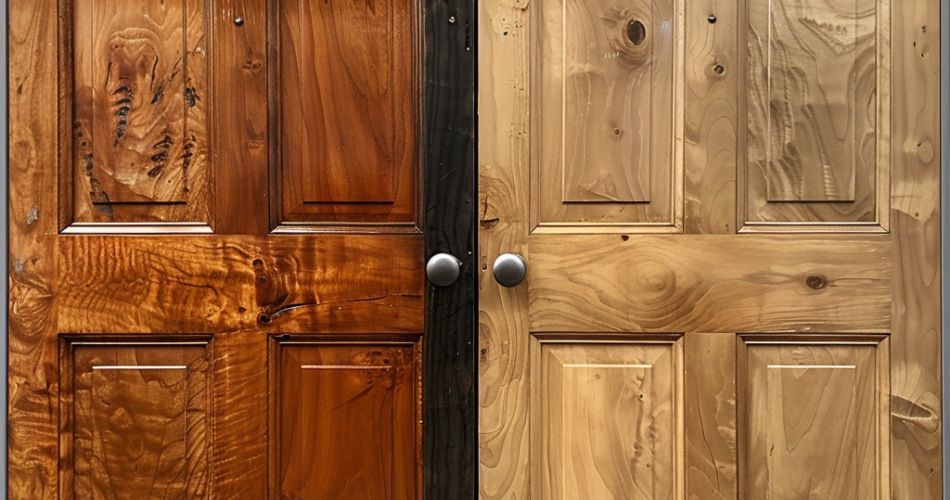Wood finishing transforms ordinary furniture into stunning pieces. Varnishes and stains are popular protective coatings for furniture finishing. This guide will help you choose the right product for your project.
Varnish creates a durable barrier on wood surfaces. It shields them from moisture, heat, and scratches. Varnish works well for both indoor and outdoor use.
Wood stains penetrate the wood, enhancing its natural grain and adding color. They’re great for highlighting the beauty of porous woods. Oak, ash, and pine are excellent choices for staining.
Understanding these finishes is key to achieving your desired look. Let’s explore varnish and stain to help you decide.
Key Takeaways
- Varnish forms a protective layer, while stain enhances wood color
- Wood varnishes offer superior durability and moisture resistance
- Stains provide more color options and highlight wood grain
- Varnish is easier to clean and maintain than stained wood
- Both finishes typically last 3-5 years before needing reapplication
- Combo products offering stain and varnish in one are available
Understanding Wood Finishes: Varnish and Stain Basics
Wood finishes protect surfaces and enhance wooden items’ beauty. Two popular options are varnish and wood stain. Let’s explore these finishes.
What is Varnish?
Varnish is a clear coating that forms a barrier on wood surfaces. It protects against moisture, heat, and scratches. You can apply varnish by brushing or spraying.
Varnish costs range from $10 to $30 per quart.
What is Wood Stain?
Wood stain penetrates wood fibers to enhance color. It highlights natural grain and changes wood hue. You can apply stain with a brush or cloth.
Stain prices vary by type:
- Oil-based stain: $20 per quart
- Water-based stain: $30 to $40 per quart
- Gel-based stain: $20 to $30 per quart
Key Differences Between Varnish and Stain
Varnish and stain serve different purposes. Varnish protects wood by creating a physical barrier. Stain enhances appearance by coloring the wood itself.
| Feature | Varnish | Stain |
|---|---|---|
| Primary Function | Surface protection | Color enhancement |
| Application Method | Brush or spray | Brush or cloth |
| Drying Location | On top of wood | Absorbed into wood |
| Effect on Wood Grain | Minimal impact | Accentuates grain |
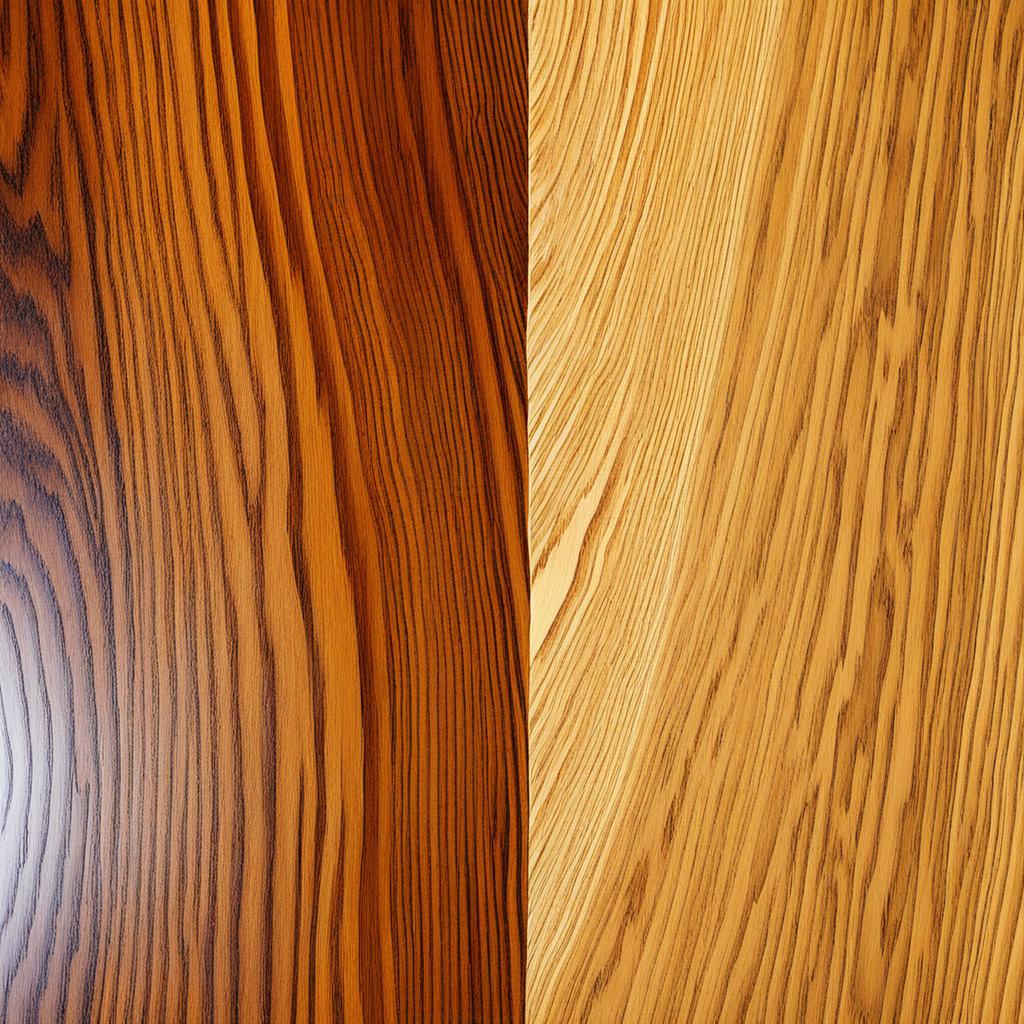
Knowing these basics helps you choose the right finish for your wood project. You can ensure optimal protection and visual appeal for your wooden items.
The Purpose of Varnish: Protection and Shine
Varnish is vital for wood preservation and finish durability. It creates a protective barrier on wood surfaces. This clear coat enhances wood’s longevity and appearance.
Varnishes are versatile and used in various construction elements. These include facades, frames, and internal structures.
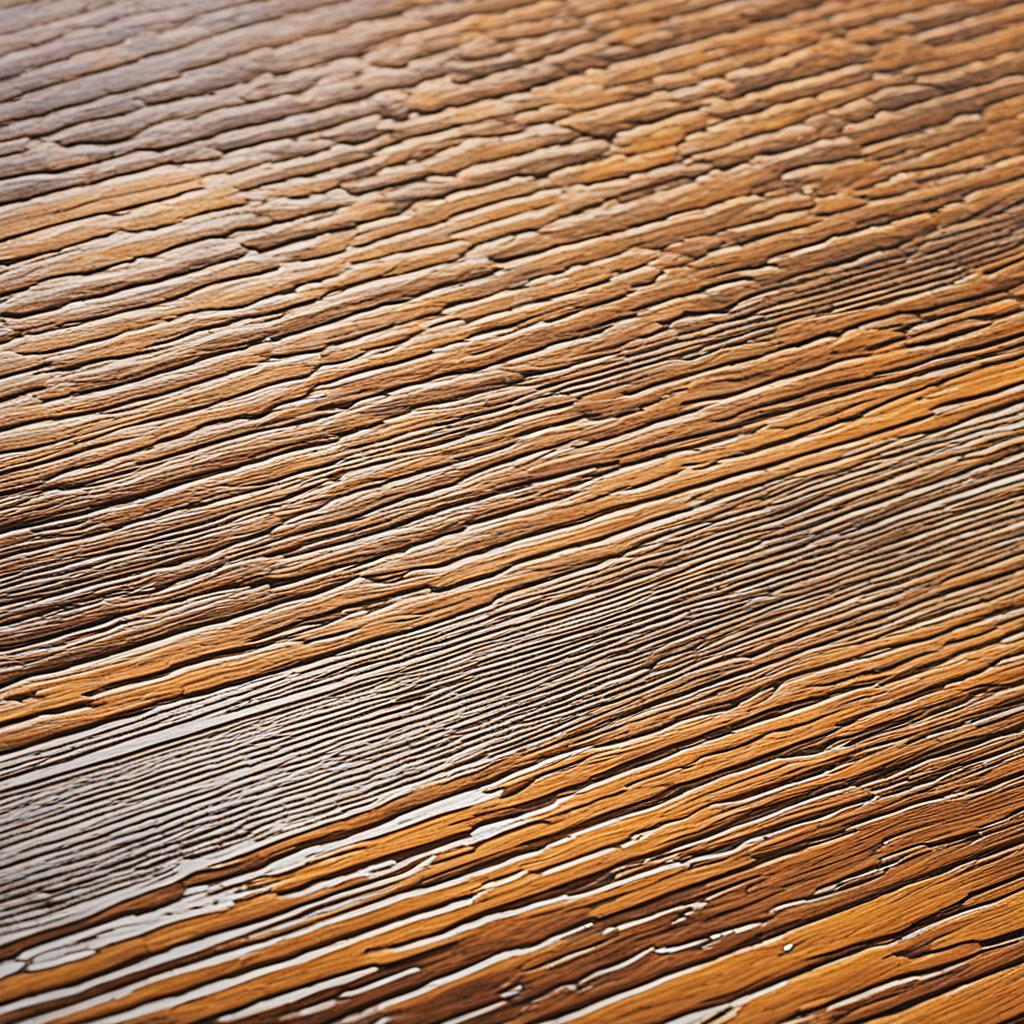
Varnish safeguards wood against environmental factors. It offers excellent water resistance and moderate heat protection. It also shields against harmful UV radiation.
Varnish is ideal for both indoor and outdoor wooden surfaces. It contributes to improved durability and longevity.
Varnish enhances wood’s natural beauty. It comes in various semi-transparent shades and sheen levels. Options include matte, satin, and gloss finishes.
Homeowners and craftsmen can choose finishes that complement their wooden pieces. This maintains the wood’s inherent charm.
“Varnish is like a superhero cape for wood, protecting it from water, sun, and wear while letting its natural beauty shine through.”
Varnish offers a robust solution for optimal wood preservation. It hardens the wood’s outer layer, providing protection against physical damage.
This makes it excellent for high-traffic areas and frequently used items. Varnish preserves wood’s authentic look while offering protection.
The Role of Stain: Enhancing Wood’s Natural Beauty
Wood staining alters or enhances wood color while preserving its natural grain patterns. This technique brings out wood’s innate beauty using special colorants.
Types of Wood Stains
There are two main types of wood stains:
- Water-based stains: Fast-drying and easy to apply, ideal for interior projects like doors, windows, and furniture.
- Oil-based stains: Perfect for rejuvenating old wood surfaces, these penetrate deeply without raising the grain.
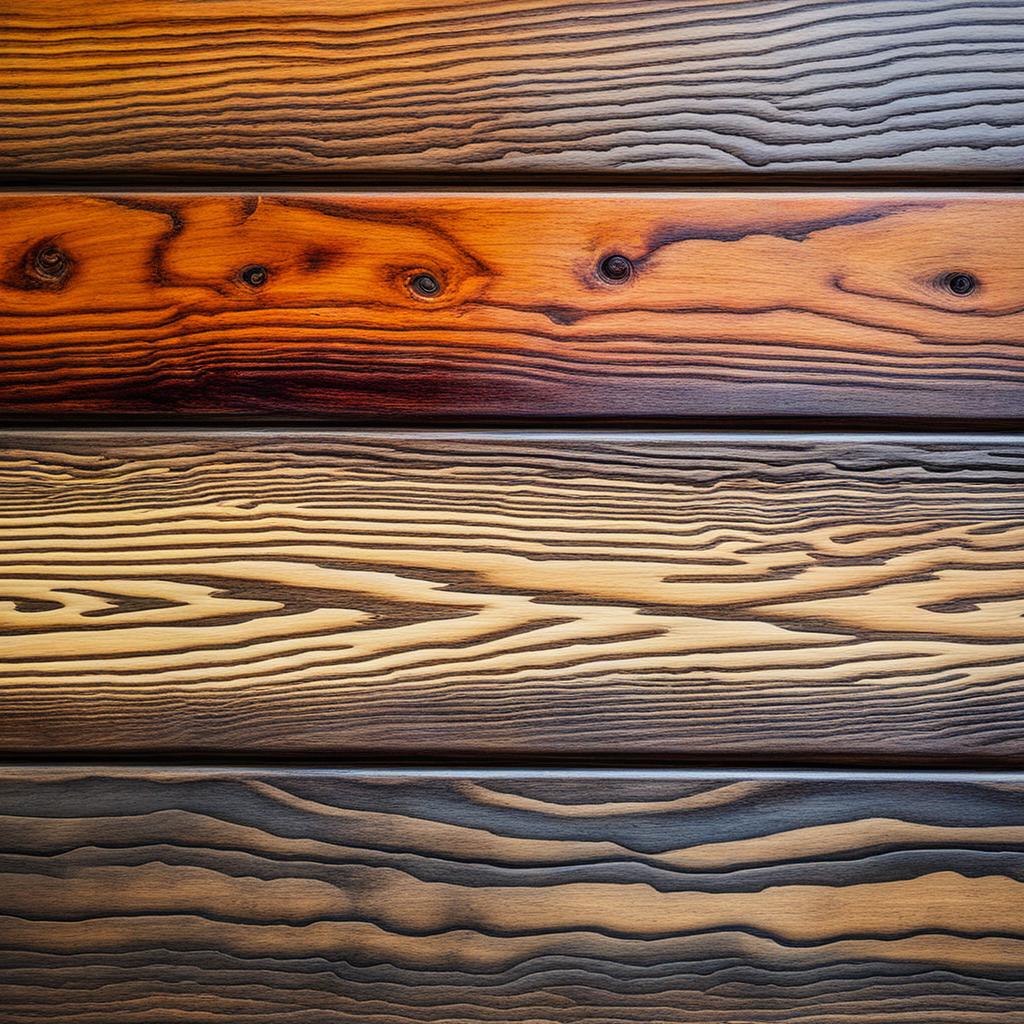
Stain Colors and Opacity Options
Stains come in various colors and opacity levels:
| Opacity | Description | Best For |
|---|---|---|
| Transparent | Allows wood grain to show through | Highlighting natural wood beauty |
| Semi-transparent | Partial wood grain visibility | Balancing color and wood texture |
| Opaque | Covers wood grain completely | Achieving a uniform color |
How Stain Interacts with Wood Grain
Stain penetration varies depending on wood type. Porous woods like oak, ash, and pine absorb stain readily, enhancing their natural grain.
The staining process requires careful application to ensure even wood grain preservation. Many woodworkers apply a clear varnish topcoat after staining for added protection.
“Staining is an art that brings out the hidden beauty in wood, revealing its unique character and charm.”
Varnish vs Stain: Appearance and Aesthetics
Wood finishes greatly impact appearance. Varnish and stain offer different looks, each suiting specific preferences for natural wood aesthetics.
Varnish provides a clear finish, showcasing the wood’s natural grain. Water-based varnishes dry clear, while oil-based ones may add a slight yellow tint.
Stain enhances wood color. It offers various options, from transparent to opaque, in different hues. Stain soaks into the wood, highlighting grain patterns and allowing color customization.
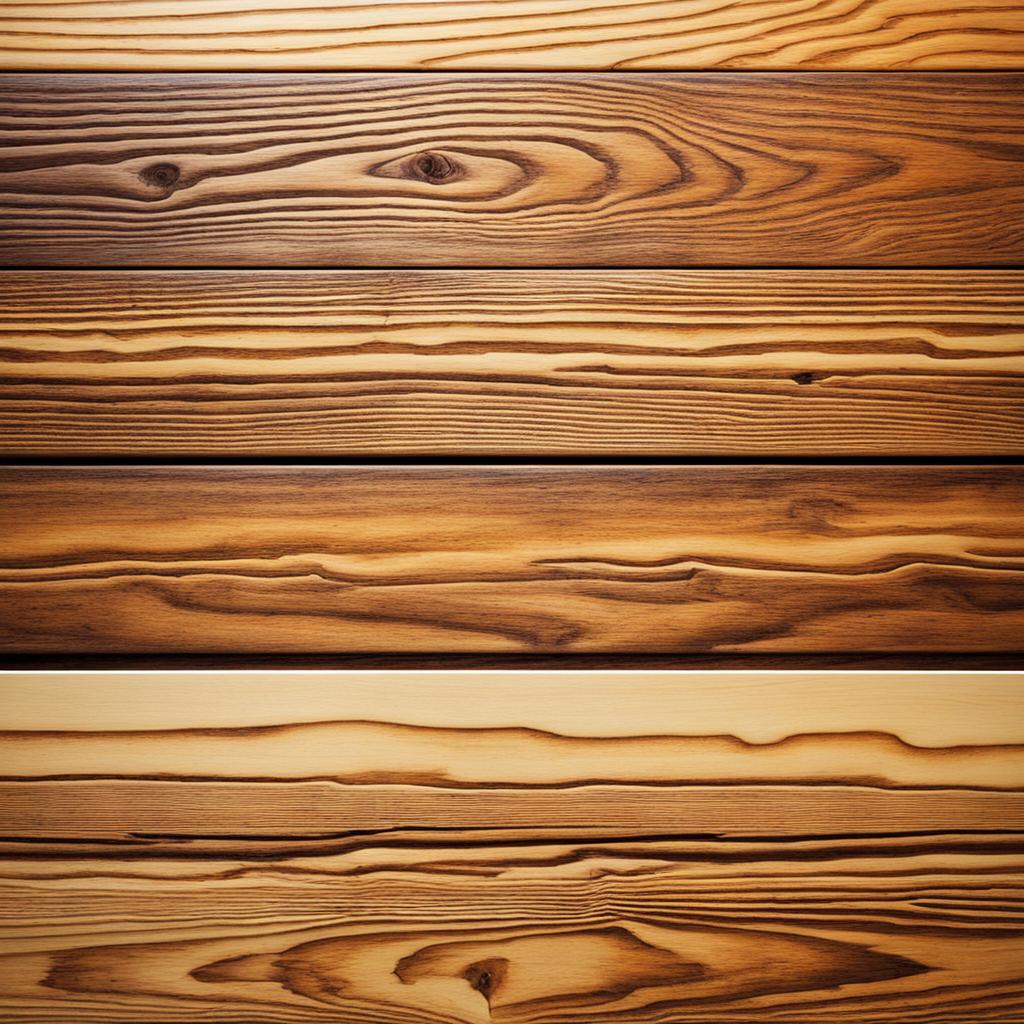
Stain offers more aesthetic versatility. The Spruce notes that stain is popular for furniture finishes. It provides a range of colors and opacities, ideal for custom looks.
Clear or colored coatings depend on your goal. Varnish showcases natural wood beauty with protection. Stain excels at transforming wood appearance.
| Aspect | Varnish | Stain |
|---|---|---|
| Finish | Transparent | Transparent to Opaque |
| Color Options | Limited | Wide Range |
| Wood Grain Visibility | High | Varies with Opacity |
| Customization | Low | High |
Your choice between varnish and stain depends on your desired look. Consider the level of wood color enhancement you want to achieve.
Durability and Protection: Comparing Varnish and Stain
Varnish and stain offer different levels of finish durability for wood protection. Understanding these differences helps you choose the right option for your project.
Water and Heat Resistance
Varnish creates a strong barrier against water and heat. It forms a protective layer on wood surfaces. This makes it perfect for areas exposed to moisture or high temperatures.
Stains offer some protection but are less effective in this regard.
UV Protection
Both varnish and stain can shield wood from UV rays. However, varnish typically provides better defense against harmful sun exposure. It’s ideal for outdoor furniture or surfaces in direct sunlight.
Abrasion and Impact Resistance
Varnish outperforms stain in resisting scratches and impacts. Its hard-wearing nature suits high-traffic areas and frequently used surfaces. Stains offer less protection against these issues.
| Feature | Varnish | Stain |
|---|---|---|
| Water Resistance | Excellent | Good |
| Heat Resistance | High | Moderate |
| UV Protection | Superior | Varies |
| Abrasion Resistance | High | Low to Moderate |
| Impact Resistance | Excellent | Poor to Fair |
Varnish is the top choice for wood protection and durability. Stains offer easier upkeep and a more natural appearance. Consider your project’s needs when deciding between the two options.
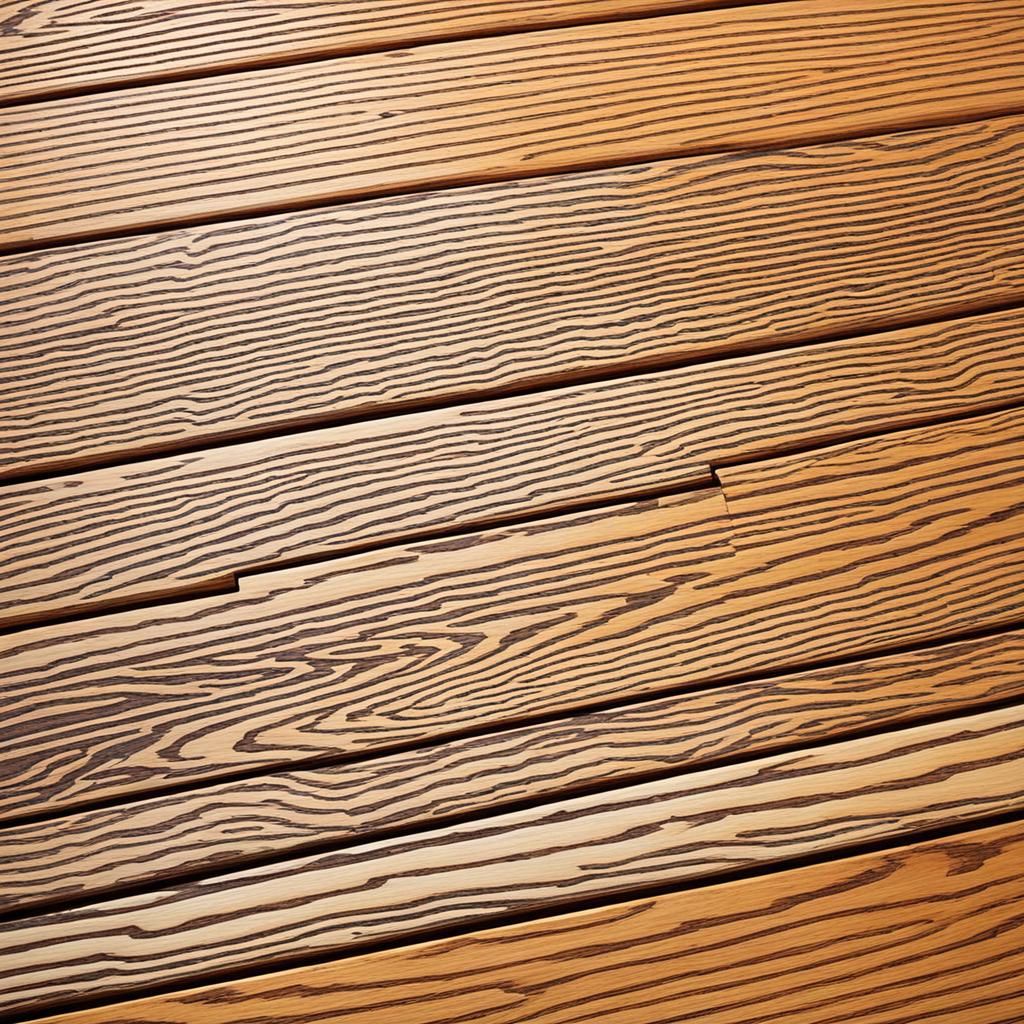
Application Techniques: How to Apply Varnish and Stain
Good wood prep and application methods are vital for DIY wood projects. Proper finishing techniques create beautiful, long-lasting results. This applies to both varnish and stain use.
For staining, start by sanding the wood with 80-120-grit sandpaper. Lightly wet the surface to raise the grain, then sand again when dry. Apply a pre-stain wood conditioner to prevent blotchiness on some woods.
Apply stain in thin coats for better color control. You can work across or with the grain. Longer sitting time leads to deeper color.
Water-based stains dry fast, making them great for small projects. Oil-based stains offer durability for larger furniture pieces.
- Water-based stains: Low VOC, fast-drying (2-3 hours), wide color range
- Oil-based stains: Longer drying time, even application, durable finish
- Gel-based stains: Better color control, but messier to work with
For varnishing, ensure the surface is clean and dust-free. Apply 1-3 light coats of polyurethane using a brush or spray can. Let each coat dry fully before the next one.
The whole process, including drying time, can take a day or more. Careful prep and application lead to pro-looking results in your projects.
Maintenance and Longevity: Caring for Varnished and Stained Wood
Proper wood care keeps wooden surfaces beautiful and durable. Regular maintenance preserves varnished and stained finishes. Follow these tips to keep your wood pristine for years.
Cleaning Methods for Varnished Surfaces
Varnished surfaces have a protective barrier, making them easier to maintain. Use mild detergent and warm water for routine cleaning. Avoid harsh chemicals that can harm the finish.
For stubborn stains on varnished parquet floors, try Blanchon Overactivated Cleaner. It’s effective for tough spots without damaging the surface.
Maintaining Stained Wood
Stained wood needs more attention because it remains porous. Regular dusting and gentle cleaning prevent dirt buildup. For oiled parquet floors, apply maintenance oil once or twice yearly.
Reapplication Frequency
Finish maintenance is crucial for longevity. Both varnish and stain usually need reapplication every 3-5 years. High-quality products may last longer, saving money over time.
| Finish Type | Cleaning Method | Maintenance Frequency | Reapplication Interval |
|---|---|---|---|
| Varnished Wood | Mild detergent, warm water | Weekly cleaning | Every 3-5 years |
| Stained Wood | Dry dusting, gentle cleaner | Bi-annual oiling | Every 3-5 years |
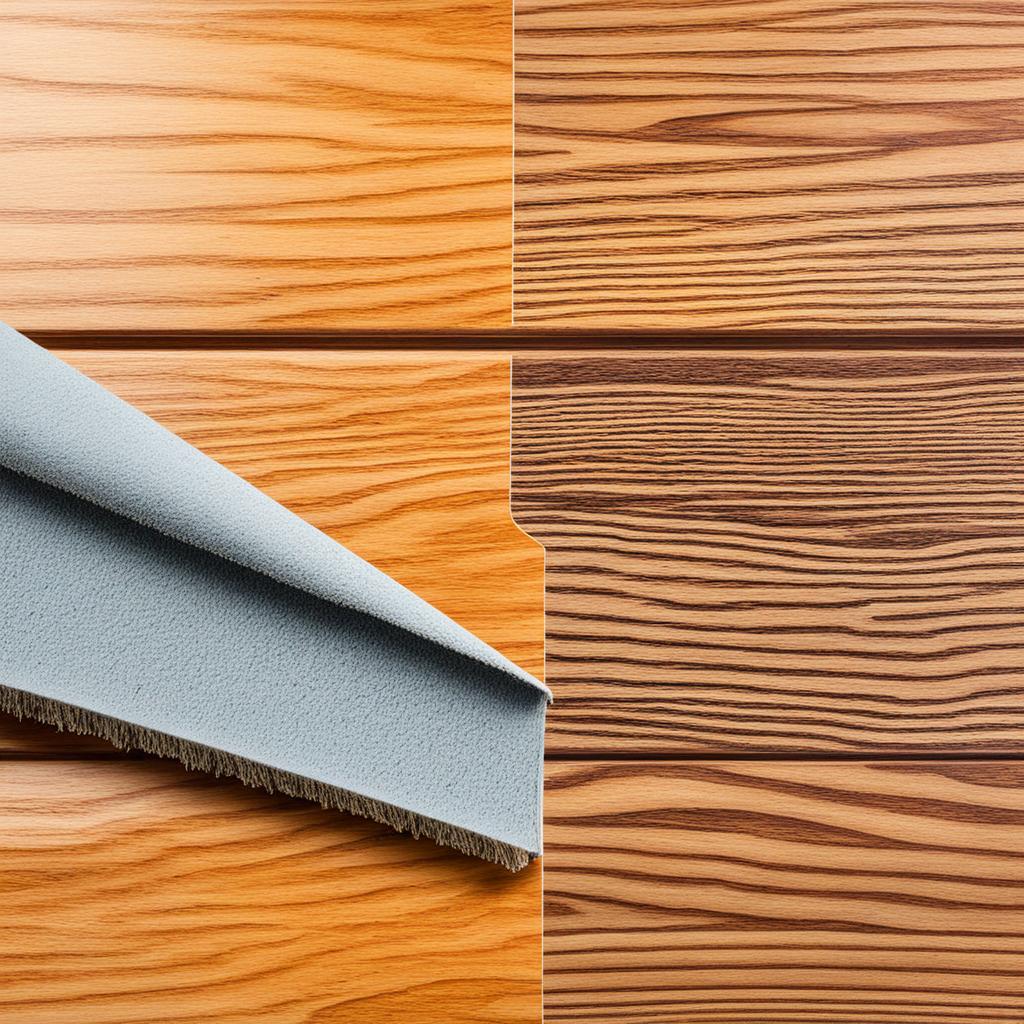
Consistent wood care maintains appearance and extends the life of wooden surfaces. Follow these guidelines to keep your wood beautiful. Your varnished or stained wood will stay stunning for years.
Cost Considerations: Varnish vs Stain
Stain is typically more budget-friendly, costing $1 to $5 per square foot. Labor costs for staining range from $25 to $50 per hour. The price varies based on the preparation work needed.
A cost analysis of wood finishing products reveals different price points:
| Product Type | Price Range (per gallon) |
|---|---|
| Oil-based stains and varnishes | $20 – $50 |
| Water-based stains and varnishes | $30 – $60 |
| Acrylic stains and varnishes | $40 – $80 |
| Polyurethane stains and varnishes | $50 – $100 |
Oil-based products are pricier but offer longer-lasting finishes. Water-based options cost less but may need more frequent reapplication. Polyurethane finishes are costlier but provide superior durability.
Consider long-term expenses when choosing between varnish and stain. High-quality products might cost more upfront but can save money over time. They last longer and need less reapplication.
Your project’s needs and budget will guide your choice between stain and varnish. Think about what works best for your specific situation.
Combining Varnish and Stain: Best of Both Worlds
Combining staining and varnishing enhances wood’s beauty while providing lasting protection. This approach creates stunning results in woodworking finishes. Let’s explore how these techniques work together effectively.
Staining Before Varnishing
Applying stain before varnish customizes wood color while preserving its natural grain. Varnish adds shine and protects against moisture, UV rays, and wear.
Choose compatible products when using this two-step process. This ensures the best results for your woodworking project.
Combo Products: Stain and Varnish in One
Combo products offer convenience by combining pigment with a protective finish. These all-in-one finishes typically use polyurethane for added durability.
They save time but may obscure wood grain more than traditional methods. Combo products work well for quick refinishing or changing wood shades.
Both separate application and combo products can yield beautiful results. Understand your project’s needs to select the right products.
Proper application and care will enhance and protect your woodworking creations. Your finishes will stand the test of time with the right approach.
